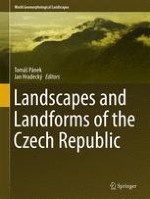2016 | OriginalPaper | Buchkapitel
2. Geology and Tectonic Development of the Czech Republic
verfasst von : Radomír Grygar
Erschienen in: Landscapes and Landforms of the Czech Republic
Aktivieren Sie unsere intelligente Suche, um passende Fachinhalte oder Patente zu finden.
Wählen Sie Textabschnitte aus um mit Künstlicher Intelligenz passenden Patente zu finden. powered by
Markieren Sie Textabschnitte, um KI-gestützt weitere passende Inhalte zu finden. powered by
